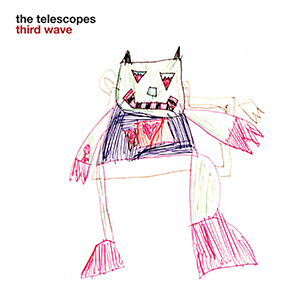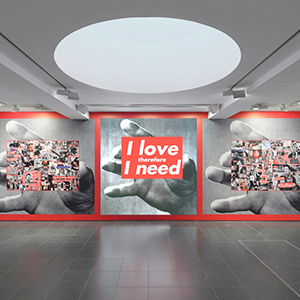BLOOM: Giorgio Moroder
By Jo Phillips
Following on from the BLOOM article about FFS (Franz Ferdinand and Sparks), we focus on the career of Giorgio Moroder, a man who produced two Sparks’ albums No.1 in Heaven, Terminal Jive and in turn had a huge impact on their legendary career. On 12th June, Italian record producer Giorgio Moroder released his first full length contribution to the music world in 30 years. Exclaiming that 74 is the new 24, he aimed to prove that his electronic veins are still pumping with his 17th studio album Deja Vu. The celebration that French house duo Daft Punk gave him in their applauded 2013 album Random Access Memories – which also featured a monologue from the man himself – built the stairway for his complete comeback. We study the blooming of the Italian’s influential career in electronic music, the albums he’s produced and the friends he has made along the shiny disco brick road. Whether you know his name or not, you are guaranteed to have either heard something he’s produced or a track he has greatly influenced.
The Se ed Stage:
ed Stage:
Giorgio Moroder was born in a small Italian town called Urtijëi (a population of circa 5000 people) near The Alps in 1940, which commonly inhabits German-speaking residents and therefore gave him the family nickname “Hansjörg”, at this stage he saw his prospects of being a musician as a limited possibility and almost gave up entirely. In a fairytale-like story, he somehow prevailed.;According to Daft Punk’s Giorgio by Moroder, his first experience with music was through the guitar (rather than the his infamous synthesizer), which he started to learn intensely between the ages of 15 and 17. In 1969 (at the age of 19), he released a 1950’s influenced album entitled That’s Bubblegum. The biggest hit off that album was the barbershop rock Looky Looky, which featured Moroder on vocals and was so successful that it received a gold disc. Around that time the multi-lingual Moroder would go to discotheques, dress in smart attire and sing for half-an-hour in Italian, English, Spanish and German, most importantly attending Scotch-Club in the German spa town Aachen. Opened in 1959, this was the first ever discotheque and coined the term DJ (disc-jokey), when a local journalist Klaus Quirini started to assuming that role by controlling their already installed record player, playing music games with the audience and commentating on the songs he scheduled. This consequentially lead to the DJ being a registered profession and Giorgio Moroder was influenced by this pioneering venue.
Although his 1972 glam production Son of My Father showed allegiance to the rock genre, it hinted at the electronic swirls and lo-fi oscillations he would later be known for. Despite the subtle nature of that attribute, it is notoriously known for being the first UK number one single (where it stayed for 3 weeks) to feature a synthesizer. In Giorgio by Moroder, he stats: “all I every wanted to do is music but not only play music. But compose music”, hence why that instrument is performed by Chris Thomas and the English singing was undertaken by British pop group Chicory Tip . He was the co-writer of the track but didn’t take control of the whole project. The namesake album it belonged to was the first time he wrote alongside Pete Bellotte, who he would form a strong partnership with, including on Donna Summer’s I Feel Love.
Father said to me we gotta have your life run night
Off you got to school where you can learn the rules there right
Be just like your dad lad
Follow in the same tradition
Never go astray and stay an honest lovin’ son.
Germination:
 Giorgio Moroder continued to record in Germany in the case of Giorgio’s Music (1973), which introduced him to German-born Schlager writer Michael Holm. They teamed up together again in the same year on a collection of songs under the project name Spinach, including on the psychedelic folk track (featuring native indian-sounding percussion such as flutes, pan pipes, cabasa) Action Man Part 1. 1975’s Einzelgänger was an important stepping stone in Giorgio Moroder’s career. It allowed the Italian to experiment with sonic effects in electro and disco spheres; a freedom tapestry without the burden of creating a commercial masterpiece. Vocoders that rippled and echoed at will and an environment that sparkled and glimmered in it’s on realm. The name translates as “loner” and continued his association with the Western European country.
Giorgio Moroder continued to record in Germany in the case of Giorgio’s Music (1973), which introduced him to German-born Schlager writer Michael Holm. They teamed up together again in the same year on a collection of songs under the project name Spinach, including on the psychedelic folk track (featuring native indian-sounding percussion such as flutes, pan pipes, cabasa) Action Man Part 1. 1975’s Einzelgänger was an important stepping stone in Giorgio Moroder’s career. It allowed the Italian to experiment with sonic effects in electro and disco spheres; a freedom tapestry without the burden of creating a commercial masterpiece. Vocoders that rippled and echoed at will and an environment that sparkled and glimmered in it’s on realm. The name translates as “loner” and continued his association with the Western European country.
Giorgio Moroder added his disco handwriting to the Moody Blues’ 1967 poetic progressive rock classic Nights in White Satin, making it glossy, full of groovy piano, breathy seductive electronically tampered vocals and breaking the standard trend of 120 bpm tempo, slowing this down to 110bpm. It changed the symphonic elements on the original in favour of digitally produced strings. Two years later in 1978, he would sample Nights in White Satin again as part of his Academy Award winning soundtrack to Alan Parker’s Midnight Express, among the Turkish-flavoured keyboards. In particular, the metallic-crash dominated The Chase from the same soundtrack is credited with shaping the hi-RNG genre; a 1980s scene picked upon by Dead or Alive, The Weather Girls and Bananarama but revitalized recently by Daft Punk and Justice. However it’s immediate impact was to force disco-mania across Europe and the Anglophone states.
Growth:
One of Giorgio Moroder’s most recognized contributions to music and a single artist’s career is Donna Summer’s I Feel Love from 1977. Recorded with Pete Bellotte, it was fascinating for it’s unique take on the boundaries of disco music. Although 100% electronic music already existed, most music in the disco genre was composed by acoustic orchestras but instead Moroder used only a Moog synthesizer as the bassline – it’s persistent yet alters progressively through the circa eight minute track – and this technique is considered to be the starting point for the evolution of techno. Moroder also broke another hoodoo in formalities, by producing the melody only after the backing track had been finished. Brian Eno called it “the sound of the future” when he heard the track for the first time. Moroder produced the whole of Donna Summer’s album I Remember Yesterday – her fifth release. An ambitious concept album it combined zeitgeist disco with distinctive styles from the previous five decades, most notably in the title track which contained 1920’s Charleston swing. I Feel Love’s role was to finish the album chronologically by travelling into a predicted yet unknown future.
House music was the next new genre he would influence because the first half of From Here to Eternity is one long mix and had an upbeat variation to the electronic composition. Although he continued to use the Moog synthesizer, it’s particular spellbinding for the way he fed bongo drums and kick drums through vocoders, as well as his idiosyncratic alterations of the voice and characterized production paths.
Reproduction:
German film composer Harold Faltermeyer is perhaps most known for the theme tune to Beverly Hills Cop (Axel F) but he also built a musical friendship with Giorgio Moroder. Not only did he arrange the The Chase from Midnight Express under the direction of Moroder and produced Sparks’ Terminal Jive with him but he also supplied a helping hand for the Italian’s E=MC². This was another groundbreaking adventure, becoming the first ever album to be recorded digitally. A very expensive process at the same time but made possible by a Salt Lake City-based company called Soundstream, who were trying to preserve old classical albums with this methodology.
Pollination:
 Giorgio Moroder used this technique when composing the soundtrack to Brian De Palma’s 1983 film Scarface; an album which gave him another taste at collaborating with popular singers on Push It To The Limit (Paul Engemann), She’s On Fire (Amy Holland) and Rush Rush (Deborah Harry), as well as reconnecting with the rock music he once belonged to. The latter’s song helped catapult her solo career and the soundtrack as a hole has been becoming a popular sample station for hip hop artists.
Giorgio Moroder used this technique when composing the soundtrack to Brian De Palma’s 1983 film Scarface; an album which gave him another taste at collaborating with popular singers on Push It To The Limit (Paul Engemann), She’s On Fire (Amy Holland) and Rush Rush (Deborah Harry), as well as reconnecting with the rock music he once belonged to. The latter’s song helped catapult her solo career and the soundtrack as a hole has been becoming a popular sample station for hip hop artists.
Moroder produced other popular, commerically-successful and critically-praised film scores in the eighties including Flashdance, The NeverEnding Story, Superman III, Over The Top and American Gigolo. The latter also featured a collaboration with Debbie Harry when she was still with Blondie (Call Me). Whilst teenage drama Foxes included yet another association with Donna Summer on the track On The Radio. He also contributed to Top Gun’s soundtrack with Berlin’s Take My Breath Away and Kenny Loggins’ Danger Zone; another venture with Harold Faltermeyer.
One of his major cinematic encounters was with the 1920’s silent film Metropolis. In 1984, he aimed to restore the German visionary classic with contemporary music and teamed up with Adam Ant, Freddy Mercury and Bonnie Tyler among other acts but also adjusted the visuals by switching the intertitles into subtitles for flowing purposes.
If movies were a diverse pollination to Moroder, then how about cars? Prolific designer Claudio Zampolli teamed up with Giorgio Moroder to start a short-lived car manufacturer entitled Cizeta. Moroder designed the logo for the company, whilst Zampolli designed their only model Cizeta-Moroder V1GT (pictured above). Like Moroder’s music it had a forward-thinking attribute; transverse configured sixteen cylinder engine. Only 17 cars were ever made and it is illegal to drive it in the U.S due to failing safety standards.
Spreading Seeds:
 Daft Punk has undoubtedly resurrected Giorgio Moroder to a new generation. The track Giorgio by Moroder from Random Access Memories not only contains a monologue of Giorgio Moroder narrating about his music career in a humble manner and some powerful quotes about freedom within composition, it’s synchronized by his evolution of music techniques. A versatile quote that can be applied in a range of art, media and philosophy lies within the documentary/interview:
Daft Punk has undoubtedly resurrected Giorgio Moroder to a new generation. The track Giorgio by Moroder from Random Access Memories not only contains a monologue of Giorgio Moroder narrating about his music career in a humble manner and some powerful quotes about freedom within composition, it’s synchronized by his evolution of music techniques. A versatile quote that can be applied in a range of art, media and philosophy lies within the documentary/interview:
Once you want to free your mind about a concept of harmony and music being correct, you can do whatever you want.
So nobody told me what to do and there was no preconception of what to do.
Daft Punk had previously wanted to work with Giorgio Moroder on their soundtrack to Tron: Legacy (which you can hear the Moroder influence) but the partnership never materialized. Although he had only been familar with the enigmatic duo from One More Time and like their perfectionism attitude. Random Access Memories seemed like a perfect place for them to collaborate considering that the album was created ambitiously without a clear plan; which relates back to Moroder’s theory of music freedom. The social commentary of unlimited electronic space vs limited content quality was also intriguing. Thus placing Daft Punk away from their cult following to a elevated status in music history.
Giorgio Moroder’s re-emergence has kept him in the spotlight for the subsequent two years including regular touring around the world. However, he was still performing his back catalogue and the music industry needed to hear fresh new ideas from the maestro. Music admirers curious wondering how he would foretell his next premonitions welcomed his first new album in 30 years. Worringly and ironically called DéJá Vu, Moroder strikes accord with contemporary singers such as Foxes, Charli XCX, Sia and Mikky Echo but also shakes hands with musicians that have – like him – recently relaunched their careers: Kylie Minogue, Britney Spears and Kelis. The Italian producer takes control of the keyboards, programming and adds his own vocals into the proceedings.
74 is the new 24 is not only a great workout track and possible anthem for aging DJs, it’s a thrilling re-introduction his futuristic fluidity and the surprise passages that his compositions often travel. Surprisingly misplaced and lost in the middle of the album, it would have been stronger at the beginning. Right Here Right Now shows that the collaboration with Daft Punk rubbed off on him, as the funky grooves from Get Lucky and the French house’s robotic burps are utilized within the summer chill. Tempted (featuring American singer-songwriter Matthew Koma) fits the same bill but to a much more poppy Maroon 5 extent and Wildstar (featuring Southampton’s Foxes) is a return back to disco. The album also features a revamp on Suzanne Vega’s Tom’s Diner, following on from Fall Out Boy’s Centuries – also released this year – with Britney Spears on lead vocals and a bridge with Moroder’s vocoder.
The question is…will it last the stand of time like his other releases?






